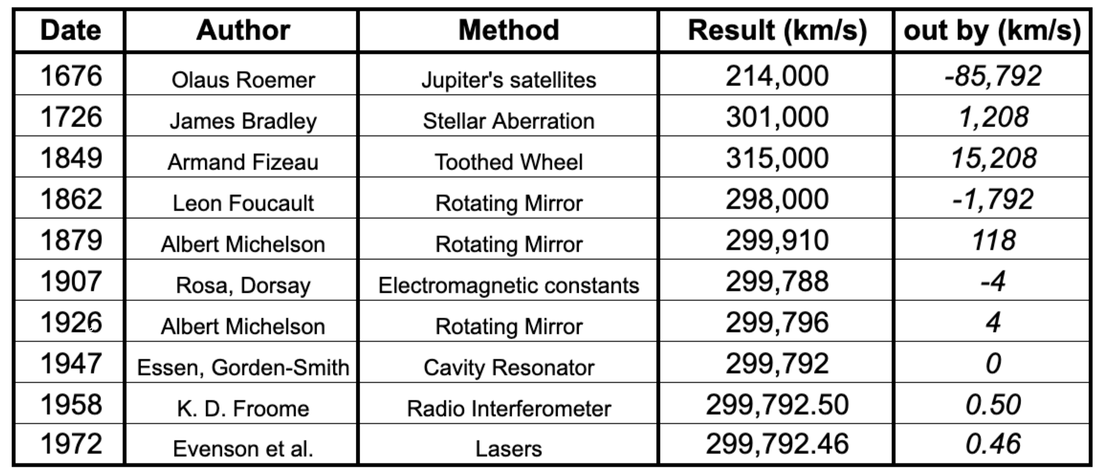|
Prior to the 17th century, light was thought to travel instantaneously. However, starting with the work of Rømer, various techniques were developed to demonstrate that light has a finite speed and this the speed could be determined.
These experiments can be roughly divided into two methodologies:
|
|
|
|
In part 2 of the series, we look at the work of Essen using a microwave cavity to determine the speed of light more accurately. By setting up standing waves, and determining the nodal positions, he was able to determine the speed of light. If you are wondering about thumbnail image, this video also examines how you can model the experiment using your own microwave oven. |
|
In part 3 we look at more recent efforts in determining the speed of light, leading to the point where the speed was set. We examine the reason why and a discussion on how we measure variables with increasing precision.
|
|
Summary
As the table below shows, the value of the experimental speed of light got closer the current accepted value, leading to the decision in 1983 to set the speed of light to exactly 299 458 792 m/s.
As the table below shows, the value of the experimental speed of light got closer the current accepted value, leading to the decision in 1983 to set the speed of light to exactly 299 458 792 m/s.

